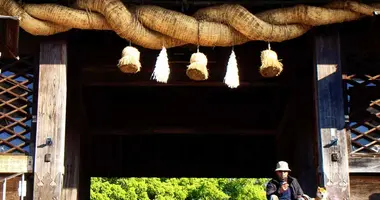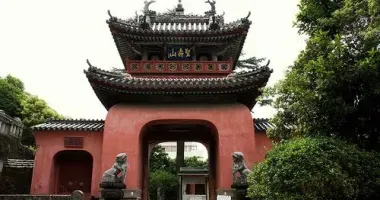Kofukuji Temple Nagasaki
- Published on : 15/04/2015
- by : Japan Experience
- Youtube
Kofukuji Temple, is located in the Teramachi district of the city and is one of the most important Chinese temples in Nagasaki, Kyushu.
Kofukuji Temple, Nagasaki, 興福寺
Jake Davies
Though it is less visited than the more famous Sofukuji, Kofukuji is actually the oldest of the temples built by the Chinese merchants of Nagasaki. Kofukuji was built by merchants from the Yangtze River basin area and was popularly known as Nanjing Temple.
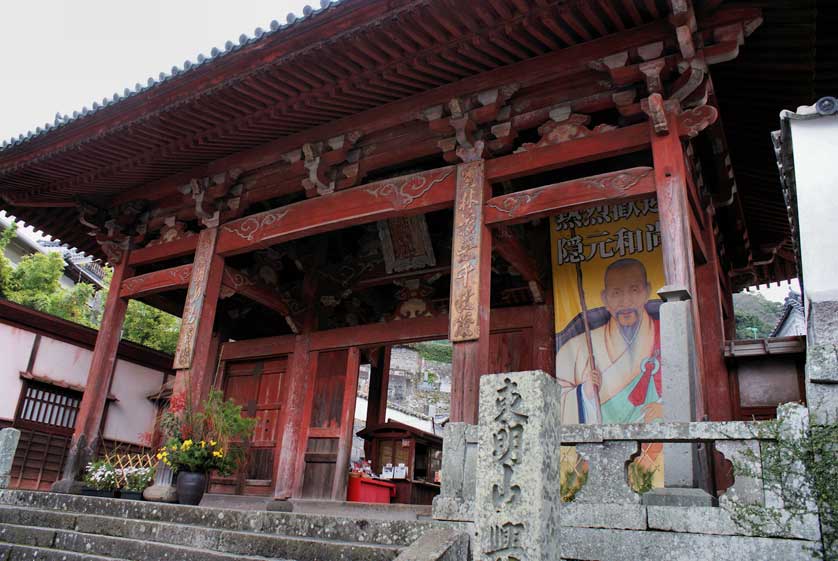 Sanmon, the main gate to Kofukuji Temple in Nagasaki is the largest temple gate in Nagasaki and a Prefecturally Designated Cultural Property. The original was built in 1654 but was destroyed by fire in 1663 and rebuilt in Japanese style in 1670.
Sanmon, the main gate to Kofukuji Temple in Nagasaki is the largest temple gate in Nagasaki and a Prefecturally Designated Cultural Property. The original was built in 1654 but was destroyed by fire in 1663 and rebuilt in Japanese style in 1670.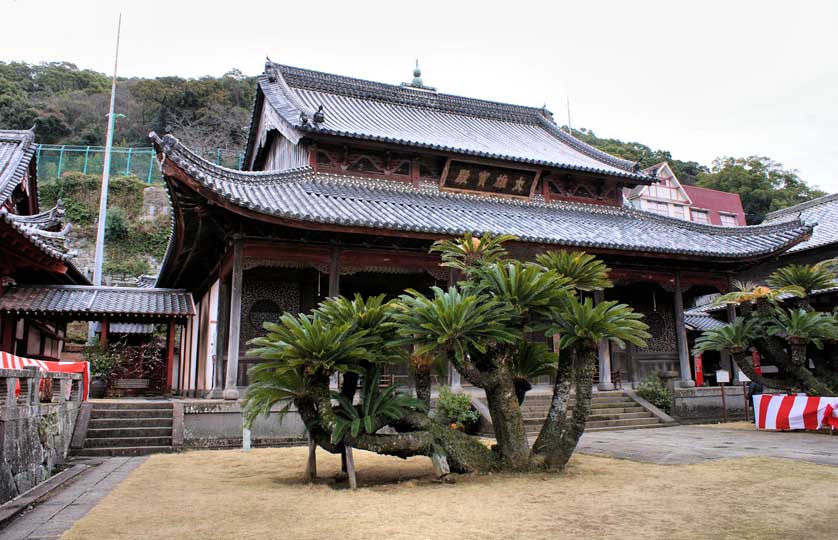 Daio Hoden, the main hall was originally built in 1632 and rebuilt in 1689 after a fire. It suffered damage in 1863 and was rebuilt in 1883 with timber prepared in China. The hall has many purely Chinese architectural features. It is a nationally registered Important Cultural Property.
Daio Hoden, the main hall was originally built in 1632 and rebuilt in 1689 after a fire. It suffered damage in 1863 and was rebuilt in 1883 with timber prepared in China. The hall has many purely Chinese architectural features. It is a nationally registered Important Cultural Property.
History of Kofukuji
The origin of Kofukuji dates back to 1620 when a shrine for the Chinese Goddess of the Sea, Mazu, Maso in Japanese, was built here. All Chinese ships arriving in Nagasaki carried a portable shrine to Mazu that was brought on shore while the ship was in port.
Next to the main hall of the temple now is a Mazu Hall enshrining the deity. All of the Chinese temples had a Mazu Hall. In 1623 the Buddhist temple of Kofuku-ji was established, possibly as part of a strategy to affirm to the Nagasaki officials that the Chinese were not Christian, but also certainly to offer funeral and memorial services to the growing Chinese community.
The main deity enshrined in the main hall is the historical Buddha Shakyamuni, known as Daio in Chinese and Shaka Nyorai in Japanese.
Chinese monks came to Nagasaki to minister to the Chinese community and it was the second abbot at Kofukuji, a man named Mokuso Nyojo, who arrived in 1632, who directed the construction of the main hall and gate. It was he who ordered the construction of a bridge across the Nakashima River to provide easier access to Kofukuji. This is the now famous Megane (spectacles) Bridge.
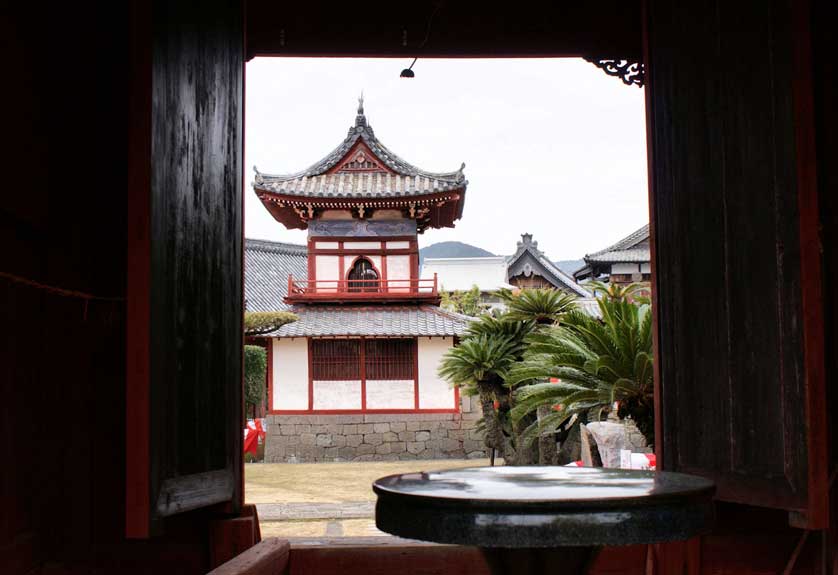 The belfry. Rebuilt many times since the original, the belfry is Japanese in style. Like many temple bells it no longer exists having been "donated" for arms production in the 1940's.
The belfry. Rebuilt many times since the original, the belfry is Japanese in style. Like many temple bells it no longer exists having been "donated" for arms production in the 1940's.
Kofukuji expanded greatly after 1654 following the arrival of the famous priest Yin-Yuan (Ingen in Japanese). He was invited by all three of the Chinese temples in Nagasaki: Kofukuji, Sofukuji and Fukusaiji, and he stayed at Kofukuji for a year.
Ingen's teachings brought the latest developments in Ch'an (known as Zen in Japanese) thought and his talks were very popular not just among the Chinese but also among the Japanese. He was subsequently invited to Kyoto, where he founded Manpukuji Temple in Uji and his teachings formed the new Obaku sect of Zen in Japan.
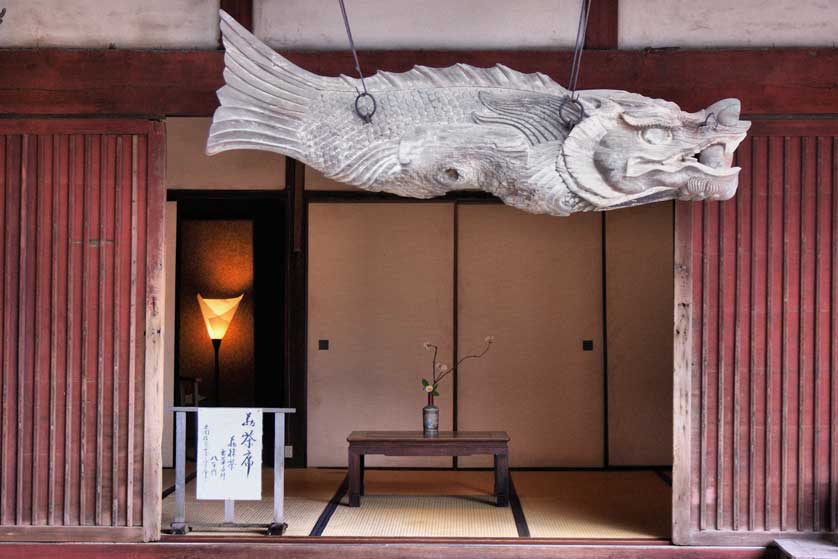 The belfry. Rebuilt many times since the original, the belfry is Japanese in style. Like many temple bells it no longer exists having been "donated" for arms production in the 1940's.
The belfry. Rebuilt many times since the original, the belfry is Japanese in style. Like many temple bells it no longer exists having been "donated" for arms production in the 1940's.
The three Chinese temples in Nagasaki all became members of the sect and remain so today. The temple is a fine example of Chinese Ming architecture, though some structures are more Japanese in style. There are many things to look out for and many designated Important Cultural Properties.
Several structures were moved into Kofukuji from other parts of Nagasaki including the Daigaku-mon, the "Great Learning Gate" which was originally part of the oldest Confucius hall in Japan, the Nagasaki Seido, built in 1647. The gate was a reconstruction built in 1711 and was moved into Kofukuji in 1959.
Tojin Yashiki Mon is a Chinese style gate that formerly stood in front of a wealthy merchants house in the Chinese quarter (Tojin Yashiki) where the Chinese were confined after 1689.
Almost certainly this gate dates from after the fire that destroyed the settlement in 1784. It was moved to Kofukuji in 1960. Of note hanging in the main hall is a huge lantern imported from Shanghai in the Meiji Period. Covered with intricate carvings it is the largest example of such a lantern in Japan.
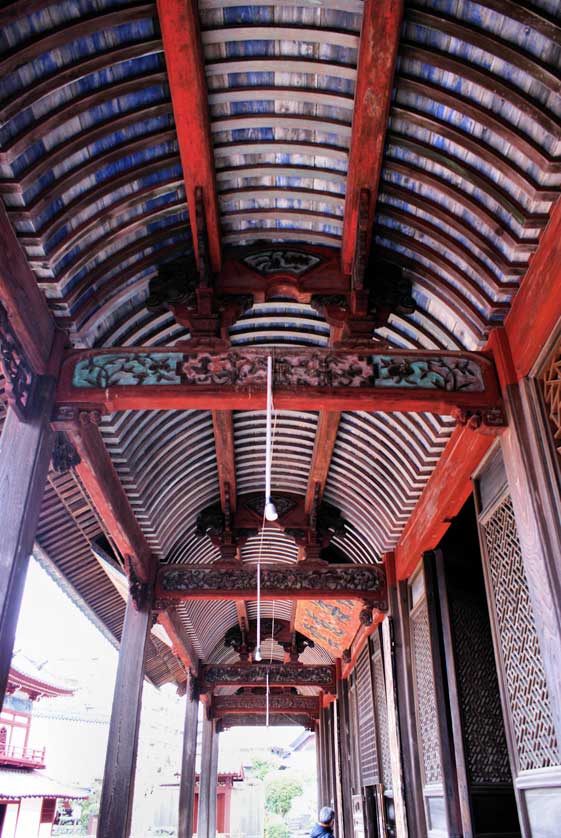 The porch of the Mazu Hall, Maso-do, displays Obaku-style architectural features like the vaulted ceiling.
The porch of the Mazu Hall, Maso-do, displays Obaku-style architectural features like the vaulted ceiling.
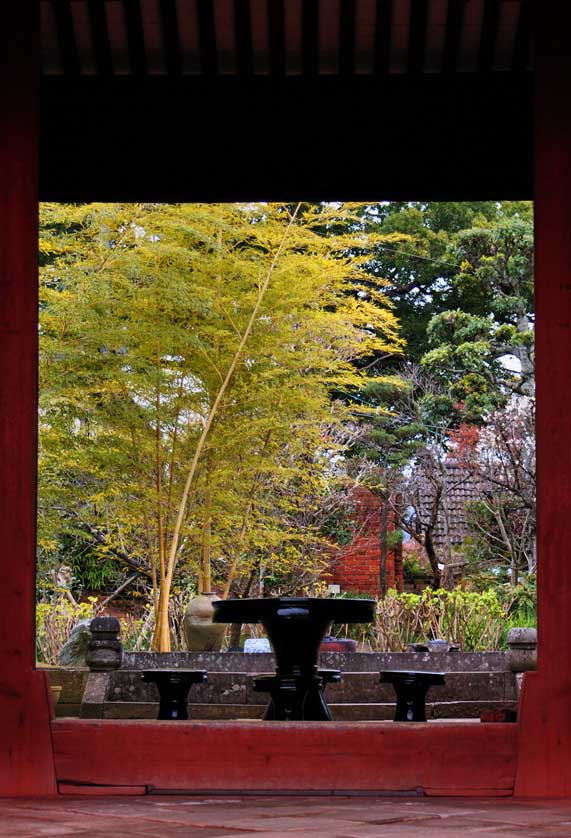 The view through the Sanko Kaisho Mon (Sanjiang Society Gate).
The view through the Sanko Kaisho Mon (Sanjiang Society Gate).
The Sanko Kaisho Mon (Sanjiang Society Gate) is all that remains of a compound within Kofukuji built by the Sanjiang (3 countries, "sanko" in Japanese) Society, an organization formed by merchants from the three Chinese provinces of Jiangnan, Zhejiang and Jiangxi.
Formed in 1880, after the restrictions placed on Chinese residents were lifted, they built a hall for ancestor worship and also lodgings. The buildings were destroyed by the atomic blast in 1945. The gate is Chinese in style and was probably built by the same carpenters in China who reconstructed the Daio Hoden at this time.
Access - Getting to Sofukuji
Kofukuji Temple
4-32 Teramachi, Nagasaki City, Nagasaki 850-0872
Tel: 095 822 1076
Open 7 days a week from 6 am to 5 pm.
Entry 300 yen for adults.
Kofukuji is located in Teramachi district which is the traditional temple district of Nagasaki. Teramachi translates as "temple town."
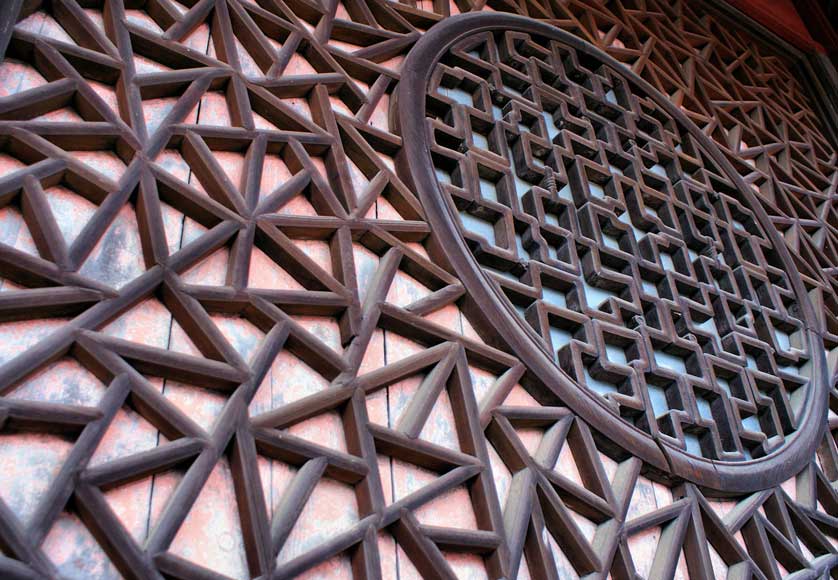 "Cracked ice lattice" is a Chinese style of window. Built without using any nails, this one originally had glass behind it but following damage from the A bomb blast a wooden board was used.
"Cracked ice lattice" is a Chinese style of window. Built without using any nails, this one originally had glass behind it but following damage from the A bomb blast a wooden board was used.
